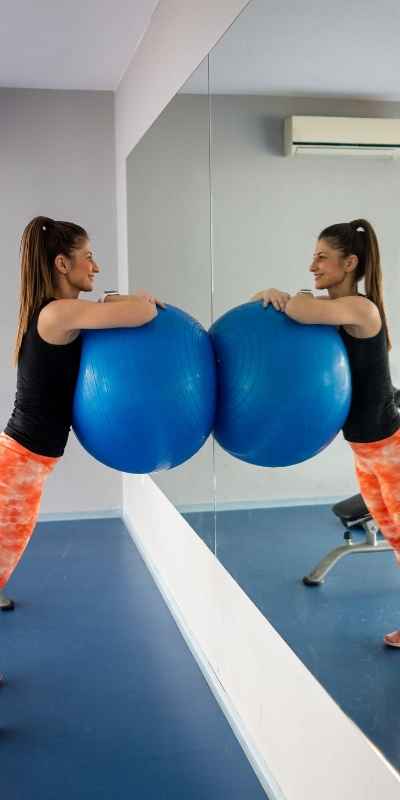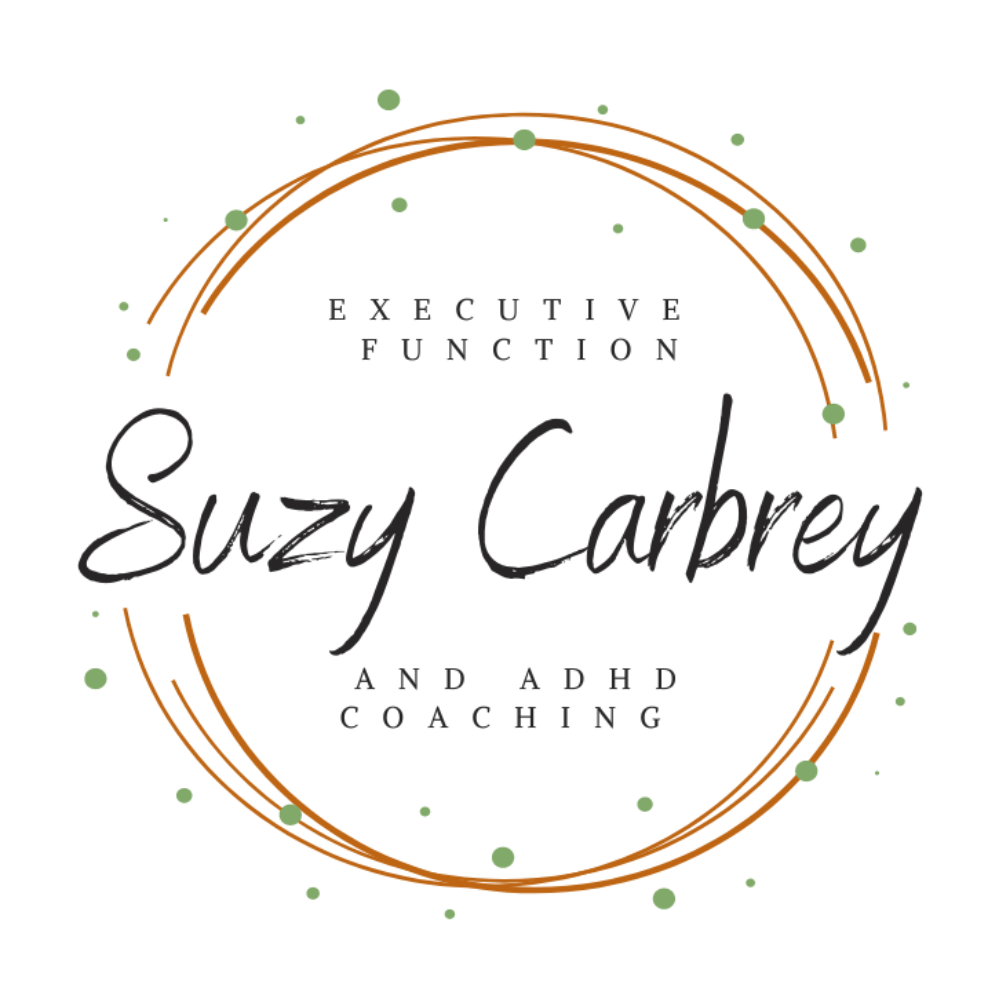For many adults with ADHD or executive functioning challenges, maintaining a consistent fitness routine can feel like a pipe dream. The intention is there, you know movement is good for your body and mind, but translating that into action? That’s another story.
The challenges are real: difficulty initiating tasks, trouble transitioning, inconsistent motivation, disrupted routines, and competing priorities. But what if the problem isn’t you, it’s the way traditional fitness routines are designed?
Let’s flip the script. Instead of trying to force your brain into a rigid fitness mold, let’s explore how to create ADHD-friendly fitness habits that work with your brain, not against it.
Why Movement Matters for the ADHD Brain
Before we talk about how to build a fitness routine that works for your brain, let’s talk about why movement matters so much, especially for adults with ADHD or executive functioning challenges.
You probably already know that exercise is good for your physical health. But what often gets overlooked is how powerful movement can be for your mental health, focus, and day-to-day functioning.
Supports Brain Chemistry
One of the biggest challenges with ADHD is low levels of dopamine, the brain chemical linked to motivation, attention, and reward. Physical activity naturally boosts dopamine, along with other important chemicals like serotonin and norepinephrine.
That means movement can actually help your brain function more effectively. It’s not a cure or a replacement for treatment, but it’s a helpful tool that can make it easier to focus, start tasks, and follow through.

Improves Focus and Cognitive Function
Movement, especially aerobic exercise like walking, dancing, swimming, or biking, has been shown to help with attention, working memory, and the ability to switch between tasks. In other words, it can support exactly the areas of executive functioning that often feel hardest with ADHD.
Even short bursts of movement can lead to improvements in clarity and focus. That’s why some people notice they think more clearly after a walk or feel more motivated after stretching or moving their body.
Helps Regulate Emotions
ADHD isn’t just about focus, it’s also about regulation. Many adults with ADHD feel things intensely and may have a harder time managing emotional responses, especially under stress.
Exercise helps reduce anxiety, stabilize mood, and increase frustration tolerance. It gives your nervous system an outlet and creates a sense of control and calm, even when life feels chaotic.
Supports Better Sleep
If you’ve ever stayed up late scrolling, struggled to fall asleep, or woken up feeling like you barely rested, you’re not alone. Sleep issues are incredibly common with ADHD.
Movement during the day can help your body wind down more easily at night. It supports your natural sleep-wake cycle, which in turn boosts your focus, mood, and ability to regulate yourself the next day.

In Short:
-
Movement helps your brain produce the chemicals it needs to focus and feel motivated.
-
It improves your ability to start tasks, switch gears, and stay engaged.
-
It reduces stress and emotional overwhelm.
-
It helps you sleep better, which sets the stage for everything else.
But these benefits only stick when movement feels doable and consistent. That’s why building a fitness routine that actually works for your brain, not someone else’s, is so important. It’s not about following a strict program or pushing through with willpower. It’s about making movement accessible, flexible, and even enjoyable.
Why Traditional Fitness Advice Often Doesn’t Work
Most mainstream fitness advice assumes a level of structure, predictability, and intrinsic motivation that may not align with how the ADHD brain works. If you’ve ever struggled to follow a program despite your best efforts, it doesn’t mean you’re lazy or undisciplined; it likely means the routine wasn’t ADHD-compatible.
Here are just a few ways traditional routines can clash with executive functioning differences:
- Too rigid: Programs that expect you to follow a strict plan (e.g., “Monday: arms, Tuesday: cardio…”) often break down when life gets chaotic or when interest wanes.
- All-or-nothing mentality: If you miss a day or deviate from the plan, it’s easy to feel like you’ve failed and abandon it altogether.
- Boring or repetitive: ADHD brains crave stimulation. Doing the same routine repeatedly can become mentally painful.
- Delayed payoff: If the focus is purely on long-term benefits (like losing weight or gaining strength), it can be hard to stay motivated in the moment.
The solution? Design a fitness routine that supports your unique brain wiring.
Principles of ADHD-Friendly Fitness
Let’s look at some ADHD-aligned principles that can help you build a movement routine that actually works:
1. Prioritize Fun
If it’s boring, you won’t stick with it. Choose movement that feels enjoyable, interesting, or energizing in the moment. That might mean:
- Dancing around your kitchen
- Trying a new group class with music and lights
- Going for a hike with a scenic view
- Playing a sport instead of doing reps at the gym
Enjoyment and stimulation create a dopamine boost right now, which helps you get started and keep going.

2. Build in Flexibility
Rigid schedules often fail for ADHDers. Create a menu of movement options instead. For example:
- Low energy? Go for a walk or stretch.
- Feeling restless? Try kickboxing or a dance workout.
- Craving novelty? Try a new YouTube video or fitness app.
This “fitness manu” approach gives you the structure of having options while maintaining the flexibility your brain craves.
3. Shrink the Start
One of the hardest parts of movement is just getting started. Reduce that friction by:
- Putting your workout clothes out the night before
- Setting a timer for 5 minutes and committing to just starting
- Creating an entry ritual (like putting on a pump-up song or lighting a candle before yoga)
Once you start, momentum usually kicks in—but the activation energy can be high, so your strategy should be all about lowering the bar to entry.

4. Stack It or Pair It
Movement doesn’t need to be separate from the rest of your life. Try pairing it with something else:
- Listen to your favorite podcast while walking
- Dance while cleaning the house
- Stretch while watching TV
Stacking movement with something you already do or enjoy adds a layer of ease and reduces decision fatigue.
5. Make It Visible and Trackable
Out of sight often means out of mind. Use external supports to keep fitness top of mind:
- Post a list of movement ideas on your fridge or whiteboard
- Use a habit tracker or calendar to mark movement days (stickers and checkmarks can be surprisingly motivating!)
- Keep your shoes and gear visible
Visual cues help anchor the intention to act, especially on busy or distracted days.
Designing Your ADHD-Friendly Fitness Plan
Now let’s build your actual routine. Think of this less like a program and more like a dynamic system that adapts with you.
Step 1: Define Your Why
Get clear on what you’re hoping to feel, not just achieve. Some examples:
- “I want to feel more grounded in the mornings.”
- “I want to release stress after work.”
- “I want to feel strong and proud of my body.”
A meaningful why increases your internal motivation, especially if the results take time.
Step 2: Choose Your Movement Menu
Create a list of 5–10 movement options you enjoy. These should vary in intensity and setting so you can adapt to different moods and energy levels.
Example:
- High energy: dance video, cycling class
- Low energy: stretching, walking, tai chi
- Social: pickleball, gym buddy, Zoom yoga
- Outdoors: hiking, rollerblading, nature walk
Your list should feel inviting, not like a to-do list.
Step 3: Choose a Rhythm, Not a Rigid Schedule
- Movement goal: 3–5 days per week
- Preferred time blocks: mornings before work, lunch breaks, after dinner
- Anchors: “I’ll walk on Mondays and Wednesdays after work,” or “On weekends, I’ll choose one fun movement.”
Think of it as a rhythm you’re dancing to, not a rulebook.

Step 4: Set Up Your Environment
Make movement easier to access:
- Leave your shoes and headphones by the door
- Save a YouTube playlist of favorite workouts
- Put a yoga mat in your living room
- Put reminder sticky notes in visible spots
The environment plays a big role in whether the action actually happens.
Step 5: Add Accountability and Celebration
ADHD brains thrive with accountability and rewards.
- Find a movement buddy or text a friend after workouts
- Use an app or journal to track and reflect
- Celebrate small wins with a sticker, a treat, or even just a victory dance
Make it satisfying now, not just when you hit a milestone.
Common Fitness Friction Points (and How to Overcome Them)
“I keep falling off the wagon.”
You’re not off the wagon, there is no wagon. Life is full of interruptions, so design routines that can pause and resume easily. If you miss a week, just pick up where you left off. No guilt required.
“I don’t have time.”
You don’t need an hour. Start with 5–15 minutes. You might be surprised how a short burst of movement shifts your mood, focus, and energy.
“I’m not motivated.”
Motivation often follows action, not the other way around. Use tricks like countdowns (“3, 2, 1, go!”), movement pairings, or rewards to help yourself get started before you feel ready.
“I hate the gym.”
You don’t have to go! There are countless other ways to move. Honor what feels comfortable and accessible to you.

Fitness as Self-Trust
One of the most powerful outcomes of building a movement routine isn’t the physical results, it’s the trust you rebuild with yourself. When you show up, even imperfectly, you’re sending a message to your brain: “I take care of me.”
Fitness doesn’t need to be one more thing you should be doing. It can be something you do for yourself, not to fix yourself, but to support your energy, focus, and mood.
Final Thoughts
Movement is one of the most effective and underused tools for managing ADHD and executive functioning challenges. But it won’t work if the routine isn’t built to support your brain.
Instead of trying to force yourself into a conventional fitness model, start with what feels good, manageable, and motivating. Make your routine flexible, visible, rewarding, and meaningful.
You don’t need to be perfect. You just need to keep returning to movement in ways that feel doable.
- Choose stimulation over shame.
- Choose rhythm over rigidity.
- Choose progress over perfection.
Your brain deserves a fitness routine that works for you, not one that makes you feel like you’re constantly falling short.

Let movement become a celebration of how you function, not a punishment for how you don’t.
Learn more with Online Coaching for Executive Functioning / ADHD
Ready to gain control and enhance your executive functioning? As an experienced and compassionate coach, I specialize in providing support for executive functioning and ADHD. To embark on your journey, please reach out to me at 708-264-2899 or email hello@suzycarbrey.com to schedule a FREE 20-minute discovery call consultation.
With a background as a speech-language pathologist, I have a strong foundation in executive functioning coaching. My graduate degree program in SLP placed a significant emphasis on cognition, including executive functions, and I have years of experience in medical rehabilitation, providing cognitive-communication therapy. Additionally, I have completed an ADHD Services Provider certification program, I am Solutions-Focused Brief Therapy Diamond Level 1 certified and I am trained in the Seeing My Time® executive functioning curriculum.
Experience the convenience and effectiveness of online coaching, backed by studies that demonstrate equal results to in-person services. Parents, professionals, and emerging adults love the convenience and privacy of receiving coaching from their own homes.
Whether you reside in Chicago, Milwaukee, Indianapolis, Kansas City, or anywhere else around the globe, I am here to assist you. Schedule your discovery call consultation today, and I eagerly anticipate the opportunity to work with you!
Please note that although I am a certified speech-language pathologist, all services Suzy Carbrey LLC provides are strictly coaching and do not involve clinical evaluation or treatment services. If you require a formal speech therapy evaluation and treatment, please inform me, and I can provide appropriate recommendations.

